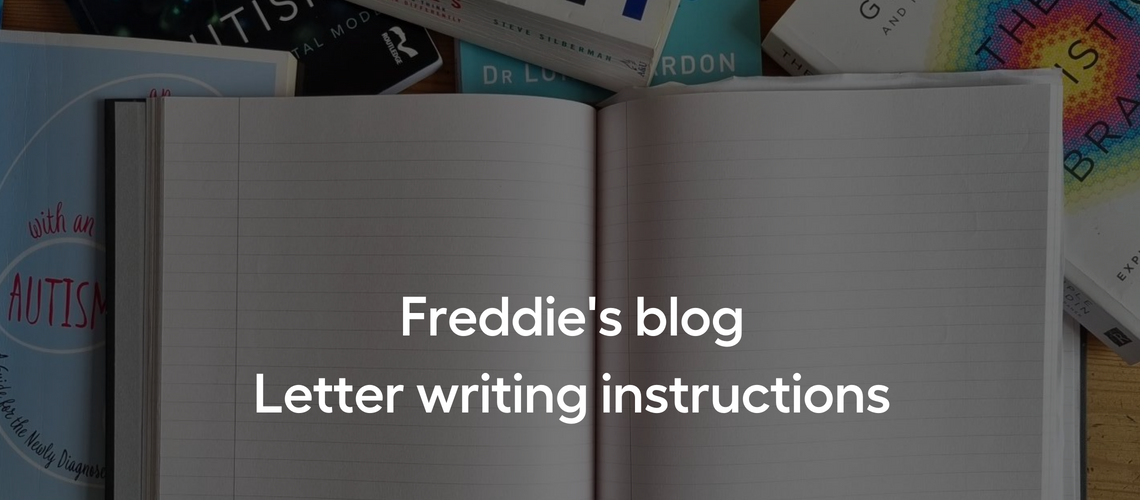Freddie's blog - Letter writing instructions

Letter Writing Instructions 1) Decide who you are going to write to, and address your letter to them. You can simply put the person’s name if you want.
2) Use paragraphs of a few lines each and focus on one main idea per paragraph. In the first paragraph, introduce the reason you are writing this letter. You can use phrases like: ‘I wanted to write to you because’ or ‘I am writing to you to explain’. Give some context too. Why are you writing today? What has changed or happened to mean that you need to make contact with someone?
3) I find it helps to break a problem down into a few separate parts, then talk about each part in turn. Keep things short, simple, and to the point. For example, if you think you can divide your concern into three parts, use three paragraphs of a few sentences each to explore each part.
4) Arrange these central paragraphs into a logical order. Try and guide your reader from one thought to another in a way that makes sense.
5) Once you’ve explained how you are thinking or feeling about the issue in full, you may wish to (briefly) restate your central point again near the end.
6) If you want the person to write back, ask. If you want them to talk to you about your letter in person, ask. If you’re very concerned about your problem, you can suggest a timeline. For example, you could ask someone to get back to you by the end of the week.
7) It’s good practice to end the letter by thanking the person you’ve written to. It’s always useful to be polite, especially if you’re seeking help.
8) Add your name at the end.
9) Always go back and re-read your letter. Feel free to move things around or delete bits that might not matter. You might want to wait a few hours or even a day or two, then come back to the letter to see if the thing you wrote make sense. If not, make some changes.
10) Send your letter.
Letter Writing Template Here’s a basic template you can use to get started with letter writing. Feel free to expand on this. The more letters you write, the better you’ll get. Simply fill in your information in the areas with the [square brackets].
Dear [name of the person you are writing to], I wanted to write to you because [state your problem here as simply as possible using just a dozen or so words]. Lately, I’ve been feeling [introduce some context for your problem, explaining what recent events have led you to feel this way].
Firstly, [begin to explore your problem here. This first paragraph might address the most important part of the problem, or perhaps introduce an idea that helps the next paragraphs make sense].
Also, [start other paragraphs with phrases like ‘Also’, or ‘Furthermore’. Make sure each new paragraph contains one central idea. Explore each part of the problem one piece at a time. A shorter letter is often better than a longer one, so make sure you don’t repeat yourself unnecessarily.] To sum up, [you might find it helps to sum up the letter in a short paragraph or a single sentence near the end to ensure your reader clearly understands your main point. Don’t be afraid of using phrases like ‘In conclusion’, or ‘Therefore’. It might sound overly academic, but if it gets the job done, go for it].
I would really appreciate it if you would [write back to me/talk to me] [before the weekend/as soon as you can] about this.
Many thanks,
[Your name].






